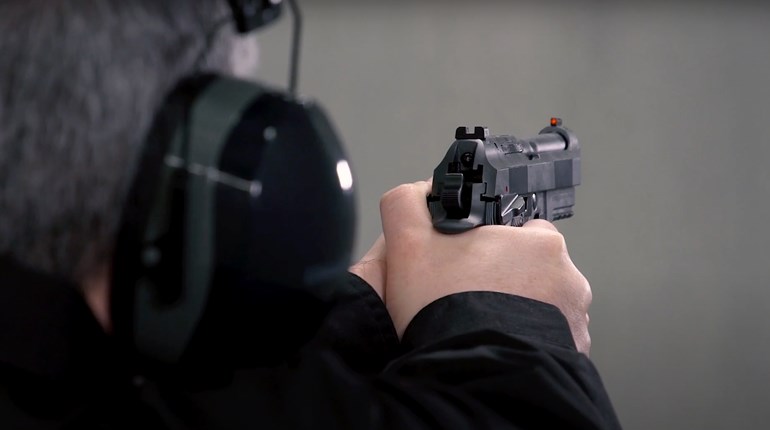
Editor's Note: For this week's #ThrowbackThursday, we're heading back to April 2007 to prove that some of the "You Are the One Millionth Visitor!" promotions are the real deal. Missouri's 13-year-old Sam Enright learned that when he signed up for his hunter-education class, he also became that state's one millionth student. Here's his story, nine-and-a-half years later. Sam, if you're out there, let us know how your hunting season went!
Thirteen-year-old Sam Enright will get some cool prizes, but the biggest benefit is knowing how to be a safe, ethical hunter.
Sam was only pursuing his interest in hunting when he signed up for a hunter-education class last November. He hit the hunting jackpot, however, when he became Missouri’s one millionth hunter-education graduate.
Sam has been fortunate to have more than one mentor. His hunting education began at the age of 7, when he accompanied his father, Dan, on deer and turkey hunts. Nurtured in this way, his interest in hunting grew. Last fall his dad bought him his first gun, a .30-30 deer rifle.
To meet the responsibility of gun ownership, Sam enrolled in a hunter-education class taught by volunteer instructor Kevin Dixon at the Four Rivers Career Center in Washington, Missouri. Good instruction and his own keen interest enabled Sam to score 96 percent on the final exam. He missed only one question.
Successfully completing the hunter education course entitled Sam to buy firearm hunting permits and hunt on his own. As it turns out, he won’t ever have to buy some hunting permits: In recognition of his special place in hunter-education history, the Missouri Conservation Heritage Foundation gave Sam a Resident Lifetime Small Game Hunting Permit, a $275 value.
“I thought that was real cool,” said Sam. “I want to make sure I use it a lot.”
Sam also received a full set of camouflage clothing and a guided spring turkey hunt from Bass Pro Shops and a 20-gauge Browning BPS semi-automatic youth shotgun donated by Browning. He was also recognized at the annual meeting of the Missouri Hunter Education Instructor’s Association Feb. 9 through 11 at the Lodge of Four Seasons, Lake Ozark.
“Cool” as all the prizes he received are, Sam counts the knowledge he gained as the most important benefit of the 10-hour course. “The most important thing I learned is to always be safe,” he said. “I learned about shotgun gauges and stuff I never knew before. I thought that was pretty interesting.”
The landmark represented by Sam’s hunter-education certification coincided with the 50th anniversary of Show-Me State hunter education in 2006. It took nearly 40 years for the Missouri Department of Conservation and its corps of volunteer instructors to train the first 500,000 hunter education students. The second half-million took only 16 years.
That was due in part to the fact that hunter education became mandatory in 1988. Since then, anyone born on or after Jan. 1, 1967, has had to successfully complete an approved hunter-education course to qualify to buy firearm hunting permits. In the first year of mandatory hunter education, a whopping 64,000 Missourians took the course.
Mandatory hunter education was a response to popular demand for safer hunting. Before the hunter education requirement went into effect, Missouri averaged nearly 100 firearms-related hunting accidents annually. Of those accidents, about 18 a year were fatal. Today, the figures are approximately 30 accidents and one or two fatalities per year.
Thanks to hunter education, hunting is safer than many other recreational activities. A study of sports injuries, conducted by American Sports Data, ranked hunting 29th out of 100 sports in the number of reported injuries per capita. The injury rate for hunting was just 1.3 per hundred participants, compared to 1.7 for aerobics, 1.8 for horseback riding, 9.0 for cheerleading and 9.3 for soccer. Football was the most dangerous, with 18.8 injuries per 100 participants.
Young hunters must be at least 11 to take the hunter-education course. More than 27,000 Missourians complete the course annually. This would be impossible without a network of 2,000-plus instructors, who donate their time and energy through Conservation Department programs to ensure that hunting remains safe and ethical.






































